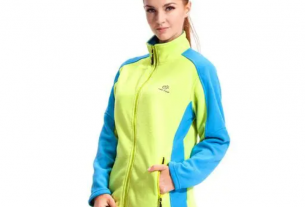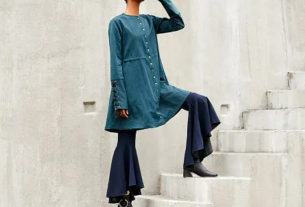In the fast-paced world of fashion, where trends come and go, a new revolution is quietly taking center stage—sustainable fashion. As consumers become increasingly conscientious about the environmental impact of their choices, technology emerges as a crucial ally in the quest for a more sustainable and eco-friendly fashion industry. In this exploration, we delve into the role of devices in steering the fashion industry towards a greener and more sustainable future.

1. Wearable Tech: Monitoring Fashion’s Carbon Footprint
Eco-Tracking Devices:
- Wearable devices equipped with environmental sensors play a key role in monitoring the carbon footprint of fashion products throughout their lifecycle.
Real-Time Data Insights:
- These devices offer real-time data insights into the sourcing, production, transportation, and disposal of clothing items, enabling brands to make informed decisions to reduce their environmental impact.
2. Blockchain Technology: Ensuring Transparency in the Supply Chain
Transparent Supply Chains:
- Devices powered by blockchain technology bring transparency to the fashion supply chain, allowing consumers to trace the journey of a garment from its origin to the retail store.
Provenance Verification:
- Consumers can use their smartphones to scan QR codes on clothing tags, gaining access to information about the materials used, ethical practices employed, and the overall sustainability credentials of the product.
3. Smart Fabrics: Merging Innovation with Sustainability
Sustainable Textiles:
- Devices that incorporate smart fabrics, such as those made from recycled materials or organic fibers, pave the way for a more sustainable approach to clothing production.
Resource-Efficient Manufacturing:
- These textiles often require less water and energy during the manufacturing process, contributing to reduced environmental impact.
4. Mobile Apps for Sustainable Fashion Choices
Eco-Friendly Fashion Apps:
- Mobile apps empower consumers to make sustainable fashion choices by providing information on a brand’s commitment to eco-friendly practices, ethical sourcing, and fair labor.
Virtual Wardrobe Assistants:
- Apps offer virtual wardrobe assistants that help users curate eco-conscious outfits and make mindful purchasing decisions aligned with their values.
5. Augmented Reality (AR) for Sustainable Shopping
Virtual Try-Before-You-Buy:
- AR applications revolutionize the shopping experience by allowing users to virtually try on clothes before making a purchase, minimizing the need for returns and reducing waste.
Sustainable Styling Suggestions:
- AR can suggest sustainable alternatives while users browse, promoting eco-friendly options and encouraging responsible consumption.
6. Digital Twins: Extending the Lifespan of Clothing
Virtual Wardrobe Management:
- Devices that create digital twins of clothing items enable users to manage and plan their wardrobes more effectively, extending the lifespan of each piece.
Upcycling and Repurposing:
- Digital twins provide a platform for exploring creative ways to upcycle or repurpose clothing, reducing the overall environmental impact of fashion.
7. IoT Sensors in Sustainable Apparel
Clothing With a Conscience:
- The Internet of Things (IoT) sensors integrated into sustainable apparel enable real-time tracking of wear and tear, helping users make informed decisions about repair or recycling.
Smart Maintenance Alerts:
- IoT-enabled clothing can send alerts when it’s time for maintenance or repair, contributing to the longevity of the garment.
8. Mobile Photography for Sustainable Fashion Advocacy
User-Generated Sustainability:
- Devices equipped with high-quality cameras empower individuals to become advocates for sustainable fashion by sharing their eco-conscious choices on social media.
Influencing Sustainable Trends:
- User-generated content fosters a community of environmentally conscious fashion enthusiasts, influencing broader trends towards sustainability.
Conclusion: Devices as Catalysts for a Greener Fashion Future
As we navigate the path towards a more sustainable fashion industry, devices emerge as powerful catalysts for change. From wearable tech monitoring carbon footprints to AR applications promoting responsible shopping, technology has the potential to redefine the way we approach fashion. By leveraging the capabilities of these devices, we can collectively contribute to a more eco-friendly and ethically conscious fashion landscape—one where style and sustainability go hand in hand, guided by the choices we make with the devices in our hands. The future of fashion is not just about looking good; it’s about feeling good about the impact our choices have on the planet we call home.





